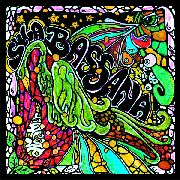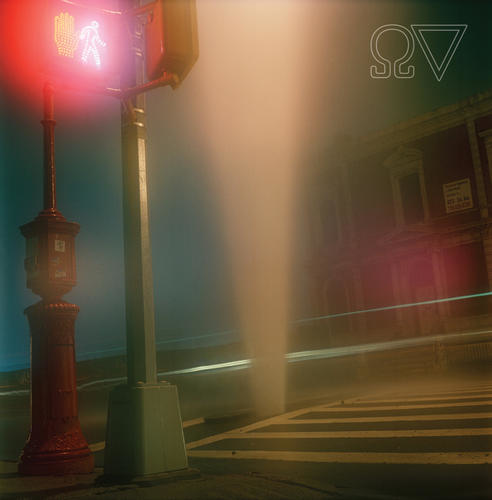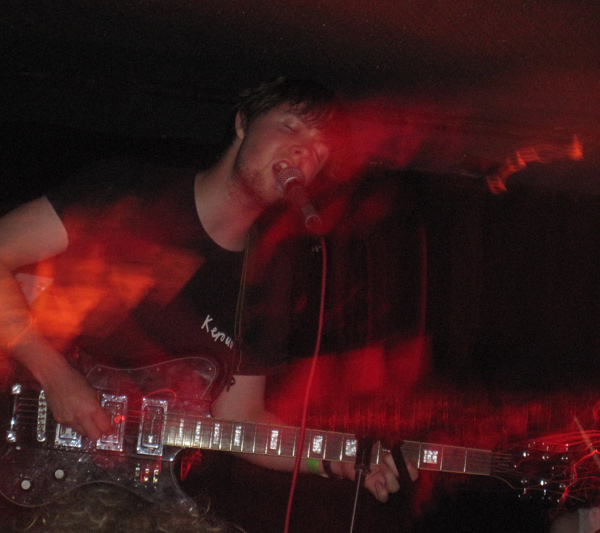Bureau B
Conrad Schnitzler is one of Krautrock’s founding fathers; he was part of the original line up of Tangerine Dream along with Klaus Schulze and he was an original member of Kluster, who renamed themselves Cluster after his departure.
is one of Krautrock’s founding fathers; he was part of the original line up of Tangerine Dream along with Klaus Schulze and he was an original member of Kluster, who renamed themselves Cluster after his departure.
A big bass synth drone starts “Paracon 1” as it drifts and wobbles, while a haunting high organ sound floats over the top. This fits in well with the more cosmic angle, and even though it touches on industrial sounds, it still feels lighter, like a deep space probe shuttling along in the void. Jittering synth tones introduce “Paracon 2” that gives the piece a more atonal sweep than its predecessor. Bell-like synth sounds clatter while a swirling synth wibble flutters over the top, lending it a jazzier edge. “Paracon 3” has the sound of a computer going out of control on a voyage to the edge of the solar system, feeling alien as it drifts through static electric sounds and the huge bass throbs to give it a very ’70s sci-fi movie feel.
“Paracon 4” starts with an arpeggiated bass sound that wrestles around a couple of notes; an almost white noise sound adds a slight Kraftwerk-like beat as chords hover above the bubbling and boiling atmosphere. A drum machine starts an almost samba rhythm at the beginning of “Paracon 5”; then notes whirl around over the top with a punchy synth sound, making it sound like an outtake from the soundtrack of a 1930s Luis Buñuel surrealist film or Man Ray’s Ballet Mecanique. “Paracon 6” reminded me more of something that Throbbing Gristle would have produced, as the synths and arpeggiation sound very similar to some of their earlier work, or early instrumentals by The Human League, with an industrial throb that makes one think of bleak city landscapes and deserted factories. A whining sound introduces “Paracon 7”, while another synth sound flutters over the top, giving it a slightly martial feel; again, a feeling of desolation prevails and it also hints at the work of Karlheinz Stockhausen within its more spatial elements. A more straight-ahead rhythm introduces “Paracon 8”, with a sound not too dissimilar to that of Jon Hassell’s Fourth World Music. Again, we are getting a forward momentum beat that is straddled by a wavering synth that replaces Hassell’s well-known trumpet sound in an odd marriage of ethnic and industrial soundscapes.“Paracon 9” is certainly the catchiest track on the album, and the one that sits closest to both Tangerine Dream’s early ’80s work and the sound that Klaus Schulze was heading towards at this period. Its sequencing takes hold of most of the track and it could almost be called Berlin school, apart from it escapes a cosmic vibe with the sounds that Schnitzler uses. A low drifting hum takes us into the final track, “Paracon 10”, which leads into some jaunty synth chords and tweeting space rock sounds that play high in the register. Another chord that rises beneath gives the sound a majestic feel as it swells every now and then, and it feels like a satisfactory ending and summing up of what has gone before.
Bureau B have a wonderful and expansive catalogue drawn from of reissuing (or in this case discovering) music by diverse artists that are always packaged and presented with care. Paracon comes with a booklet that features some great photos of Conrad and a piece about the discovery of these tracks. If you are a fan of Conrad’s works, then this is a must-have release and certainly sits alongside his other records from this era. The Paragon Session Outtakes gives a broader understanding of why he is so important to the scene at that time and influential on so many other artists.-Gary Parsons-



